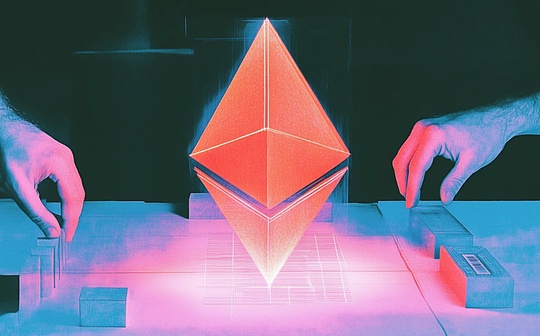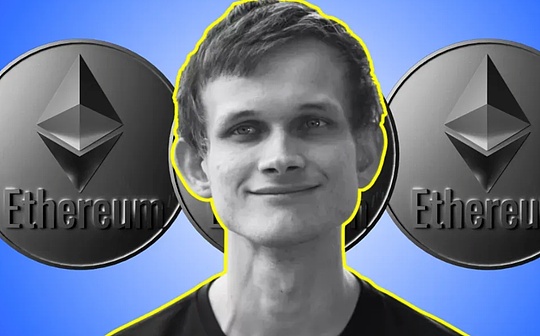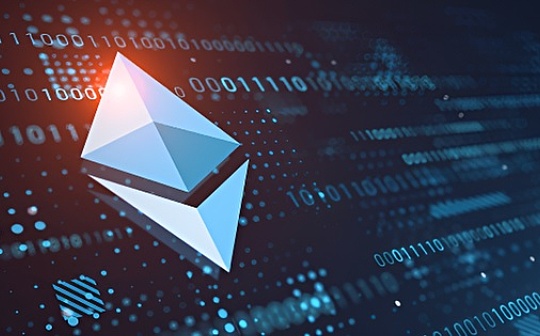
Author: Marcel Deer, CoinTelegraph; Compiled by: Tao Zhu, Bitchain Vision
1. What is Ethereum Prague-Electra (Pectra) upgrade?
Ethereum’s Pectra upgrade combines two separate upgrades: the Prague upgrade and the Electra upgrade.
The Prague upgrade focuses on changes in the network execution layer, while the Electra upgrade affects the consensus layer.When these upgrades are combined, they are collectively referred to as “Pectra” upgrades.
The Pectra upgrade will follow “Dencun,” a merger of the Deneb and Cancun upgrades, which will take place in March 2024.Technically, Dencun is an Ethereum hard fork designed to reduce transaction fees for Layer 2 solutions.
Pectra is a new milestone on the Ethereum development roadmap and is scheduled to go live in the first quarter of 2025.This schedule allows for additional features to improve the Ethereum user experience (UX).
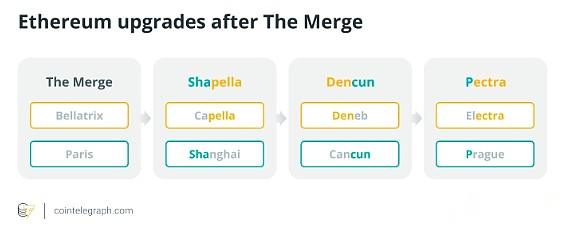
Pectra may include Ethereum Improvement Proposal (EIP) 3074, a set of code changes designed to improve the Ethereum wallet, allowing users to batch process transactions and sign in one step.EIP-3074 was approved in April 2024 to include the Pectra upgrade and will be accessible to regular crypto wallets.
The Pectra upgrade will also implement EIP-7251, which will increase the staking limit for validators from the current 32 Ethereum (ETH) to 2,048 ETH.This increase allows validators to hold balances between 32 and 2,048 ETH, expanding from the previous 32 ETH limit, aiming to slow down new validators joining the Ethereum network, which means staking providers.
Upgrades may also include peer-to-peer data availability sampling or PeerDAS to extend Rollup and EVM object formats (EOF) to improve smart contract security and developer experience on Ethereum virtual machines (EVMs).
However, Ethereum developers are discussing whether to replace EIP-3074 with EIP-7702, a new type of transaction proposed by developers including Ethereum co-founder Vitalik Buterin, designed to enhance account abstract compatibilitysex.Additionally, they are considering implementing a patch for EIP-2935, which addresses the problem of handling historical block hashing.
Developers are also considering incorporating other EIPs into Pectra upgrades, such as allowing validators to withdraw money from smart contracts and delete deposit windows.
2. Pectra upgrade functions and advantages
Pectra upgrades focus on small-scale improvements to consensus and execution layer updates.
EIP-7251: Increase the pledge limit
As of June 2024, the maximum effective balance of Ethereum validators is 32 ETH.Therefore, to pledge more than 32 ETH, the staking provider must start multiple validators, each of which must pledge 32 ETH.Since each validator must be in sync with the rest of the network, the surge in validators may put pressure on the communication layer of the network.
The Pectra upgrade will allow staking providers to merge their staking to fewer validators by increasing the maximum effective balance to 2,048 ETH.This will reduce the number of messages that need to be delivered in the network, reduce pressure on the validator network layer, and possibly improve network efficiency and performance.
PeerDAS/rollup Improvements
PeerDAS extends the “blobs” introduced in EIP-4844.Blob is a new way to optimize transaction data storage in the Ethereum Layer 2 network, increasing block space and reducing transaction fees.They were launched in March 2024 as part of the Dencun upgrade.Transactions carrying blobs are similar to ordinary Ethereum transactions, but include additional data for off-chain storage, thus reducing the burden on the Ethereum main chain.
EVM improvements
EVM improvements, such as EOF, are planned to innovate and improve performance in UX, Developer Experience (DevEx), and Layer 1 and Layer 2.
3. What is Ethereum improvement proposal?
EIP is a key part of the Ethereum development process and is also a way to achieve Ethereum network upgrade.
EIP is a proposal or standard that details potential new features, improvements or processes for the Ethereum blockchain network.They contain technical specifications for proposed changes, and according to Ethereum.org, they are the “source of truth” for the community.
The Ethereum network upgrade is proposed to the Ethereum development community and discussed and developed through the EIP process.Anyone in the community can create an EIP, and the author is responsible for reaching an agreement with the Ethereum development community and recording any opinions to the contrary.
EIP authors are usually developers.EIP can make changes to Ethereum and be proposed, debated, and if successful, adopted.Ethereum network upgrades, such as Dencun and Pectra, consist of a set of EIPs that, once finalized, must be implemented by each Ethereum client on the blockchain network.
4. Ethereum development roadmap:Prague/Electra Upgrade Schedule
The Dencun upgrade for Ethereum took place in March 2024, and Pectra is scheduled to go live in 2025.
Ethereum’s post-merger roadmap is part of a five-step process outlined by Buterin, aiming to improve the smart contract blockchain after Ethereum switches to the Proof of Stake (PoS) consensus mechanism in September 2022.These five stages are Merge, Surge, Verge, Purge and Splurge.
Ethereum developers have decided not to rush to release Pectra by Devcon in November 2024 so developers can monitor upgrades more effectively based on their previous upgrade experience.
After Pectra, the next upgrade may include the highly anticipated “Verkle Tree”, This is a new type of data system that allows Ethereum nodes to store large amounts of data.Pectra is seen as a relatively small upgrade.According to Tim Beiko, head of agreement support for the Ethereum Foundation,The development of the Verkle tree will take more than a year, and the upgrade will continue until 2025.This Ethereum network upgrade will be more substantial.
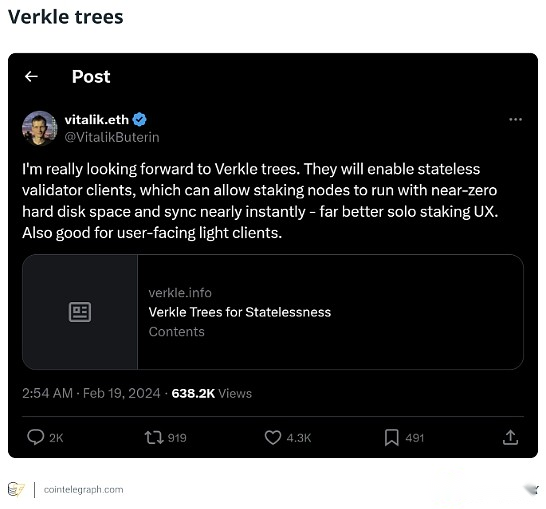
The Verkle tree is part of the Ethereum post-merger roadmap that promises smaller proof sizes and lower node hardware requirements.In an article on X, Vitalik Buterin noted that the Verkle tree feature will allow pledged nodes to run with “nearly zero hard disk space and synchronize almost immediately” to improve user experience and user-facing light client.
The Verkle tree is being developed as part of the “Verge” phase and may be included in the “Osaka” upgrade, which is likely to take place sometime after the 2025 Pectra milestone.

